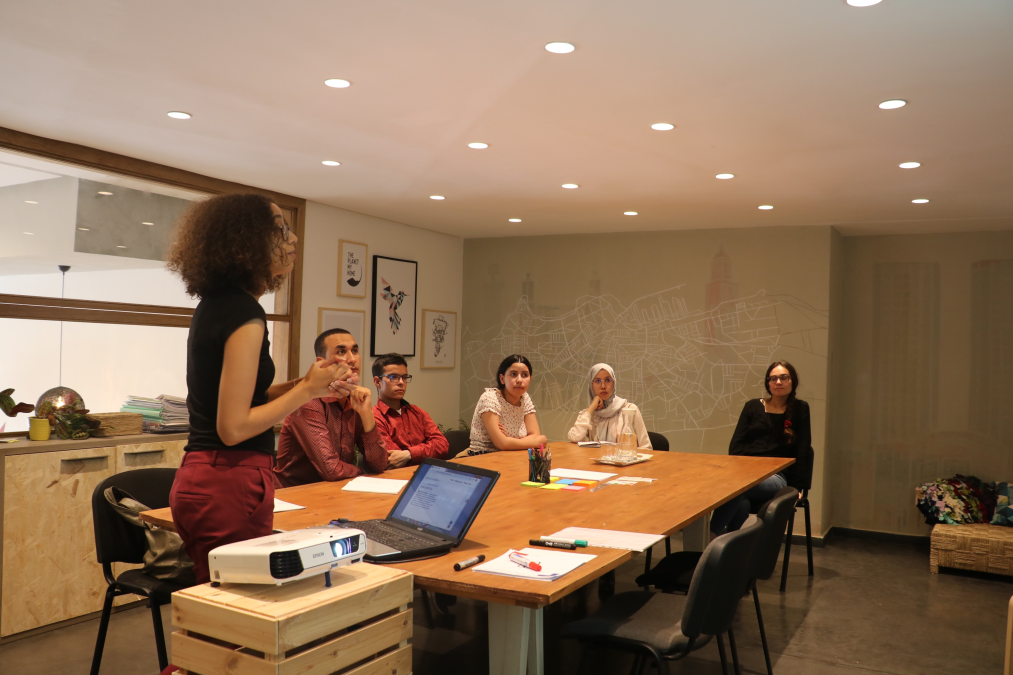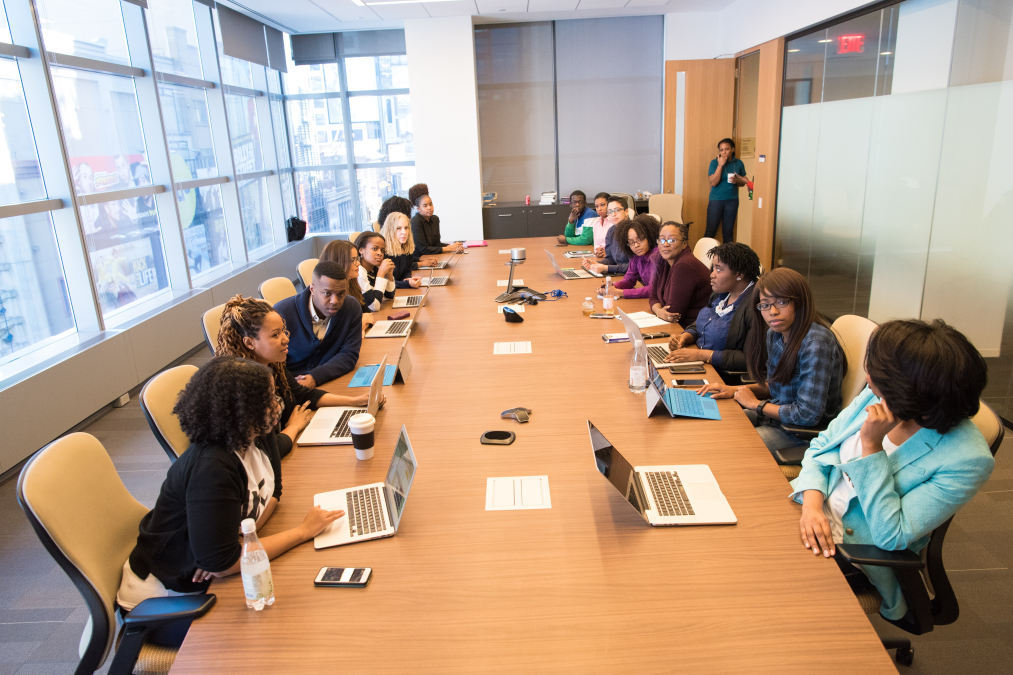Diversity and inclusion are two of the biggest buzzwords in recruitment at the moment. Creating an inclusive workplace doesn’t just mean taking on more women and ethnic minorities. A truly diverse workforce should also include employees at different life stages, as well as neurodiverse workers, members of the LGBTQ+ community, and people with disabilities. Some companies are leading by example. The number of women heading up the world’s top businesses are higher than ever before, according to the 2020 list of Fortune 500 companies. But as movements such as Black Lives Matter demonstrate, there is still a long way to go in the workplace.
Even today, female executives such as Mary Barra at General Motors and Sonia Syngal at The Gap account for less than 8% of Fortune 500 leaders. What’s more, among the male CEOs on the list, just a handful are openly gay, and only five - including Kenneth Frazier at pharmaceutical giant Merck - are black. In the UK, the picture is similar, according to the latest Parker Review. Published in February 2020, it revealed that 37% of FTSE 100 companies have “no ethnic representation on their boards”. That’s an improvement on 2017 when 51% of FTSE 100 companies had all white boards, but as committee chair Sir John Parker concluded there’s “much more work to be done”.
Greater diversity is proven to increase productivity and profits. Companies with more female executives are 15% more likely to experience above-average profitability, while organisations with good ethnic and cultural diversity at the executive level are 33% more likely to outperform, according to a 2018 report from McKinsey & Company.
Deloitte also argues that businesses that prioritize inclusivity and diversity are twice as likely to meet or exceed their financial goals - perhaps because this approach helps them attract talented millennials, more than eight in 10 of whom feel engaged and empowered by an inclusive culture.
With diversity high on the agenda both in and out of the workplace, the time is now to become a more inclusive employer. Here, we explain how you can take positive action to maximize workplace diversity in three steps.
1. Create an employer brand that appeals to all

The first step towards becoming a more diverse workplace is to make sure your company is attractive and accessible to a wide range of individuals. Businesses that score highly in this area include beauty company L’Oreal, which offers diversity and inclusion training to employees of all levels and runs a range of global initiatives, such as pairing employees with multicultural employees and sponsoring disability awareness workshops. The result? It’s ranked as one of the most gender balanced companies worldwide and employs people of 168 different nationalities via its subsidiaries. Measures you can take to promote inclusion and appeal to a more diverse range of jobseekers include:
- Implement a flexible working policy - this is particularly attractive to parents or those with other caring responsibilities and is likely to be offered by more employers in the wake of the Covid-19 pandemic
- Provide diversity and inclusion training - offering specific training to employees across the board will show prospective employees you are keen to create an inclusive workplace
- Introduce a zero-tolerance policy for discrimination and harassment - managing workplace diversity means prioritizing a first-rate employee experience for everyone
- Promote women and non-white staff members - having people from minority groups in positions of responsibility is key to managing diversity in the workplace
- Accommodate the needs of those with physical impairments - for example by ensuring all areas are accessible by wheelchair
- Offer mental health training - it’s vital for managers to be able to spot when people are struggling
- Tackle the gender pay gap - promoting transparency around pay and benefits is especially important if you want to attract more female applicants
- Provide a range of employee benefits - the aim is to provide advantages for everyone from a young single mum to someone approaching retirement age
- Highlight your commitment to diversity - for example by showcasing female and ethnic minority leaders on your company website
2. Refine your recruitment and discovery process

Creating a more inclusive workplace culture should help you appeal to a more diverse range of talent. But how can you ensure the people you want to engage with are aware of opportunities at your company? It all comes down to your recruitment and discovery process. How you find jobseekers and how you make those final decisions to recruit them into the business. Perhaps the easiest way is to ask staff members to share job openings with candidates who will boost the diversity of your workforce.
When social media company Pinterest asked its employees to refer more women and members of underrepresented ethnic groups, the number of referred candidates from both groups rose by a quarter or more. IT leviathan Intel went a step further by offering employees who referred successful minority candidates a $4,000 bonus - twice as much as those who referred white males who were later taken on.
Employee referrals are far from the only way to boost workplace diversity, though. Using an equal opportunities recruiter will help you tap into previously untouched markets, as will posting your vacancy in more unusual places, such as gyms, shopping centers, and libraries. The right recruiter can also help to dilute any unspoken bias that might be preventing candidates from being given a fair chance regardless of their race, gender, age, sexuality, or neurodiversity or disability profile.
Other ways to tackle this include appointing a hiring panel (ideally a diverse one), and encouraging them to check each other’s biases throughout each stage of recruitment. A growing number of employers are also adopting so-called blind hiring, which involves removing telltale identifiers such as names and photos from applications to avoid unconscious bias and allow each individual to be judged on his or her merits alone. The same panel can also input on the job adverts themselves, ensuring inclusivity that throughout the recruitment process.
3. Create job ads that resonate with diverse jobseekers

The way you write your advert will have a massive impact on who applies for it. Did you know, for example, that while most women will only apply for jobs when they meet 100% of the criteria outlined in the ad, men will go for it even if they only meet 60% of the requirements? So if you include a long wish list of qualifications, abilities and experience, you can expect to attract mainly male talent.
The language you use is also critical. While words that suggest a cooperative and caring work environment (think “supportive” or “friendly”) will attract more female and ethinc minority applicants, using male pronouns and male-coded terms such as “aggressive” and “driven” will seriously restrict the type of applications you receive.
Here are a few pointers to help you write a job advert that appeals to a more diverse talent pool:
- State that you are an equal opportunities employer to show you’re keen to promote diversity and inclusion
- Highlight if there is the chance to work remotely some or all of the time
- Emphasize any flexibility you offer clearly to avoid deterring candidates with caring responsibilities, for example by adding (flexible working available) to a full-time job post
- Make sure the job title is gender neutral, for example terms such as analyst can appear male oriented, despite being used for both genders
- Include a salary range so that female jobseekers have a transparent view of how much is on the table, minimizing concerns over a gender pay gap
- Underscore benefits such as parental or religious leave that are likely to appeal to women and ethnic minorities
- Explain any training and development opportunities available to all employees, so older employees know they won’t be sidelined due to their age
Take your first step towards a more inclusive workplace

From increasing your profits to helping you attract top talent and build a more engaging brand, promoting diversity and inclusion will give your company the boost it needs to prosper both today and in years to come. We can help you become a truly inclusive employer by widening your talent pipeline and upgrading your recruitment process. Get in touch with one of our consultants for an informal chat.